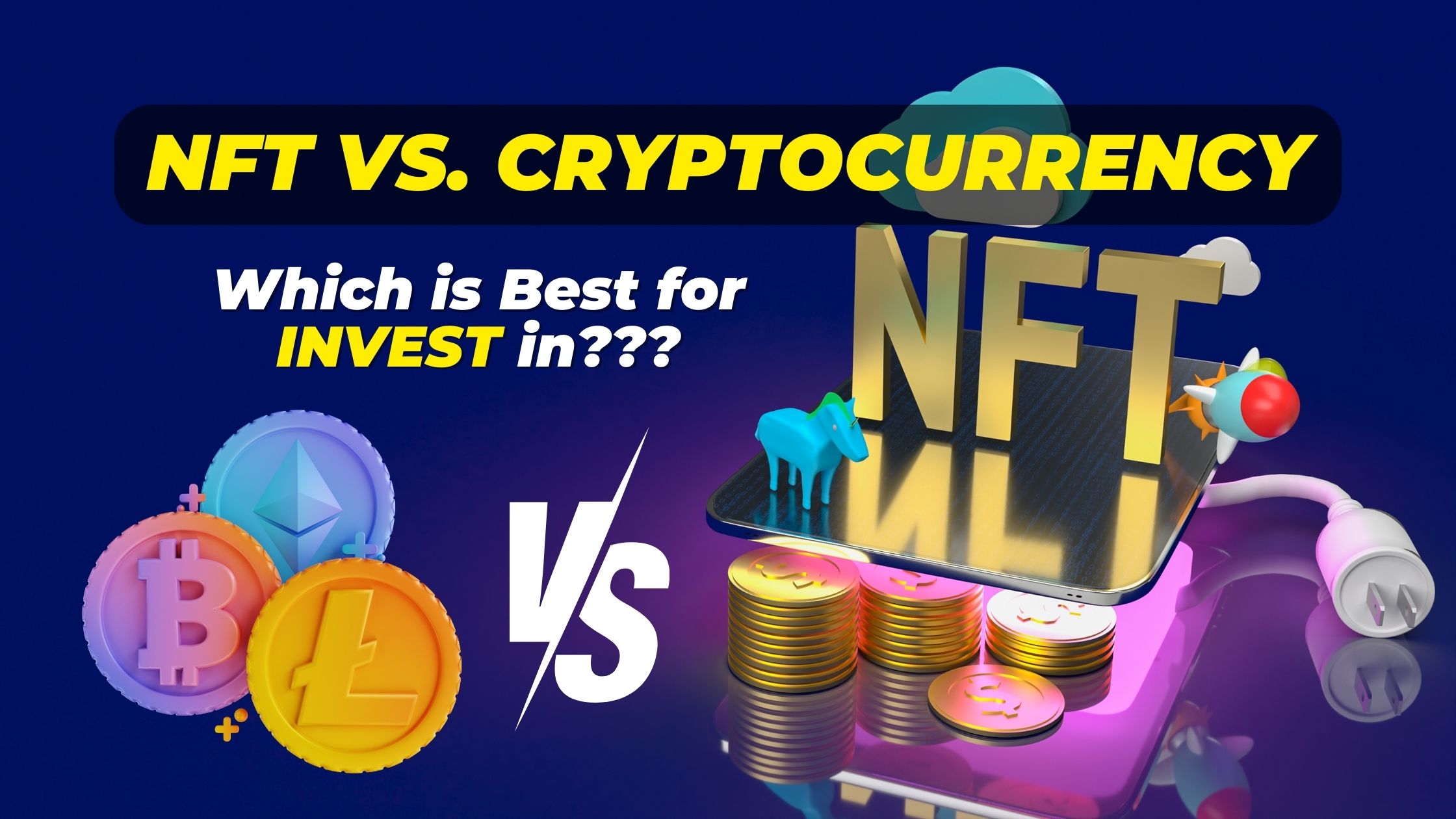“NFT vs. Cryptocurrency” has become popular in digital assets. As we venture into 2023, the debate about better investment is heated. You’re not alone if you’re on the fence about where to invest. This article breaks down the fundamental differences between NFTs and cryptocurrencies, aiming to guide you in making the most innovative investment choice this year.
Table of Contents
Understanding the Basics
NFT vs. Cryptocurrency, To maximize profitability in crypto mining, utilizing a GPU that provides a high hash rate while being energy efficient is crucial. GPUs with higher hash rates can solve cryptographic puzzles faster, earning miners more cryptocurrency. Meanwhile, energy efficiency ensures that the power costs don’t outweigh the profits.
Understanding the Basics
What are Cryptocurrencies?
Cryptocurrencies are digital or virtual currencies that use cryptography for security. With decentralized control as opposed to centralized banking systems, famous examples include Bitcoin, Ethereum, and Litecoin.
What are NFTs?
NFT stands for Non-Fungible Token. Unlike fungible cryptocurrencies, which can be exchanged one-for-one, NFTs are unique. They represent digital ownership of a particular item, artwork, or content on the blockchain.
What Technology is used in NFT and Cryptocurrency?
NFTs (Non-Fungible Tokens) and cryptocurrencies utilize blockchain technology as their foundational backbone, but the specifics of their technology can vary. Here’s a breakdown of the core technology used in both:
1. Blockchain Technology
Basics: At its core, NFTs and cryptocurrencies operate on blockchain networks. A blockchain is a decentralized and distributed ledger that records transactions across multiple computers to ensure the data can only be modified once consensus has been reached among participants in the system.
- Cryptocurrencies: Bitcoin, the first and most well-known cryptocurrency, operates on its proprietary blockchain. Other coins like Ethereum, Litecoin, and many others have their blockchains or are built atop existing ones as tokens.
- NFTs: Most NFTs are built on the Ethereum blockchain, which introduced the concept of “smart contracts.” These are self-executing contracts with the terms of the agreement between buyer and seller directly written into code. The Ethereum platform allows for the creation of ERC-721 tokens, a standard for NFTs. However, blockchains like Binance Smart Chain, Flow, and Tezos have also started supporting NFTs.
2. Cryptography
Cryptography ensures the security and integrity of data in both cryptocurrencies and NFTs. Digital signatures, cryptographic hashing, and public-private key pairs are foundational to secure and authenticated transactions.
3. Token Standards
Cryptocurrencies generally have their own defined token standards depending on their blockchain. For instance, the ERC-20 standard on Ethereum establishes rules that tokens must follow to trade, transfer, or access.
NFTs: The ERC-721 standard on Ethereum is widely adopted for NFTs, allowing each token to have a unique value and attributes. There’s also ERC-1155, a newer standard that can represent multiple classes of assets and qualify for batch transfers, making it more efficient in some cases.
4. Decentralized Applications (DApps) & Platforms
Cryptocurrencies: Many platforms like decentralized exchanges (e.g., Uniswap) or financial apps (e.g., Compound) are built on blockchain technology and allow users to interact with cryptocurrencies in various ways.
NFTs: Platforms like OpenSea, Rarible, and Foundation are decentralized applications built on blockchain technology that allows users to mint, buy, sell, and trade NFTs.
5. Consensus Mechanisms
Different consensus mechanisms are used to validate and verify transactions on a blockchain. Bitcoin uses Proof of Work (PoW), Ethereum currently uses PoW but is transitioning to Proof of Stake (PoS), and other blockchains use variations or entirely different consensus methods.
Investment Landscape in 2023
Market Trends
The cryptocurrency market, though volatile, has shown resilience and adaptability. In contrast, NFTs have seen a skyrocketing interest due to their application in arts, entertainment, and gaming.
Risk vs. Reward
Cryptocurrencies offer a broader market with established protocols. While they carry risks, their decade-long presence provides a certain level of trust. NFTs, being relatively new, have shown incredible returns and significant losses. Their value is highly subjective, often tied to cultural and artistic trends.
Key Factors to Consider
Liquidity
Cryptocurrencies, trendy ones like Bitcoin and Ethereum, are highly liquid. NFTs, on the other hand, are more niche. Selling an NFT might take more time and effort, especially if there’s no current demand.
Longevity
While specific cryptocurrencies have stood the test of time, the NFT market is still proving itself. Discerning between short-lived hype and assets with genuine long-term potential is essential.
Technological Advancements
Both sectors are at the forefront of technological innovation. Watch for advancements in blockchain scalability, energy efficiency, and integration. These could significantly influence the ROI of your investment.
Also read this Blog: Cryptocurrency vs Stock Market: Which is Best for Your Investment?
Final Thoughts: NFT vs. Cryptocurrency
NFT vs. Cryptocurrency, The convergence of blockchain technology in NFTs and cryptocurrencies represents a watershed moment in the evolution of digital assets. As we immerse ourselves deeper into a digitally-driven age, understanding the intricacies of these technologies is paramount. Cryptocurrencies, with their decentralized monetary potential, challenge the very fabric of traditional financial systems. On the other hand, NFTs affirm digital ownership and authenticity and reshape art, entertainment, and multiple other sectors.
NFT vs. Cryptocurrency, While the buzz around NFTs and cryptocurrencies may occasionally seem overwhelming or transient, it’s undeniable that the underlying blockchain technology holds transformative power. As we navigate this digital frontier, investors, creators, and consumers must approach it with curiosity and caution. Remember, as with all revolutionary technologies, the landscape is dynamic, and adaptation will be key to seizing the opportunities they present.





 Bitcoin
Bitcoin  Ethereum
Ethereum  Tether
Tether  XRP
XRP  USDC
USDC  Lido Staked Ether
Lido Staked Ether